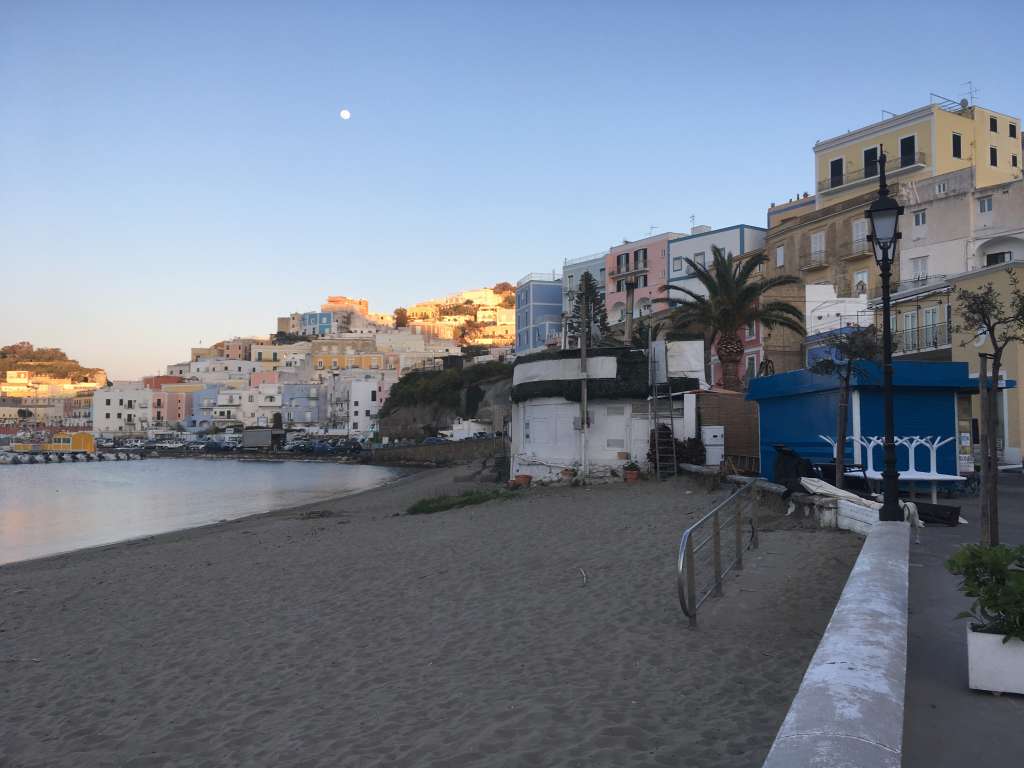We left Marina Di Olbia on Tuesday 16 at 9.30am. No wind calm seas headed out across the Tyrrhenian Sea to Italy and Isla Di Ponza.
Sky was covered with a low grey cumulus cloud blotting out the sun and the later rising moon. We were able to do some sailing at first but the wind was more or less heading us. But the majority of the passage was under engine with the full main sail acting as boat stability and giving some extra propulsion assistance.
Early evening we saw 3 to 4 swallows circling the boat trying to land. One did eventually fly inside out of the cabin on a number of occasions, eventually settling self down in the forward berth on one of the narrow shelves. Another maybe part of family group as the 3 other swallow trying land on the boat one did land and spent the night behind the spray hood all puffed up to keep himself warm.
Small birds such as swallows migrate north in the Spring and head back south in the early autumn. Having to make long sea passage when crossing the Mediterranean Sea. Adverse winds can impede their flight, favourable winds can assist their flight. Unfortunately when I checked on the swallow in forward bunk it had passed away. I could see it was only a young bird or fledgling. The larger swallow flow off from behind th spray hood at first light.
It did make me think there must be many smaller migrating birds die on passage to norther latitudes. Swallows have beautiful markings and their feathers are like velvet to look at and feel. I couldn’t help thinking how precarious life is for our small feathered friends.
Later we had a good sighting of bow racing common Dolphins, but they didn’t stay around long. Barada my old Nicholson for some reason Dolphins seem to prefer bow racing long Keeled sailing boats. Maybe the pressure wave is more pronounced!
We arrived on Wednesday 17 18.30 hrs in Ponza Harbour is on the main island of Ponza part of the Pontine Archipelago off the west coast of Italy near Napoli.
Ponza town is very small but lots of little bars and restaurants there is an excellent anchorage with nice sandy bottom. The pontoon mooring we found rather expensive at €60 euro per night, wed already committed ourselves to staying on the morning pontoon. But next time I would only anchor in the bay.
Thursday 18 at 13.00 hrs we left the harbour unfortunately we had to back and anchor due the mainsail halyard coming loose from the top of the sail. I had to get Chris to go up the mast to retrieve the halyard which he did successfully. He has his right to passage as that was the first time he’d been up a mast.
After about hour or so we again left the anchorage to head back to southern Sardinia. Wind was fickle and because of the overall distance 200nm I decided we needed to motor all the way. Chris acted as Skipper for the passage he wanted to get sea miles in and over night passages for his upcoming Yachtmaster course. We did get some nice sailing in on the following day 19 April from 01.00 until 06.00hrs. Had nice moon lite night winds were from the west averaging 8 knots.
I was on watch on Saturday 20 had sighted land and the lighthouse of Cabo Carbonara, when suddenly the wind dramatically increase from the SE up to 23 knots. I had to call Chris up on deck from his slumbers. We had agreed to try make Teulade but with winds increasing and the sea state getting rough, after reducing the main sail we headed around the headland in towards the marina at Villasimius. It’s nice easy harbour to enter we arrived 08.47. Chris needed to head off as he wanted catch th ferry from Caglari to Rome in the afternoon. Before flying back to Vienna where he lives.
One of things with sailing in small boats is you always have to vigilant of winds and how quickly things can change. I was aware of the possibility of winds increasing but I thought maybe they arrive later in the day. I use kestrel wind, temperature and barometric pressure handheld instrument, make note of pressure. Any sudden drop in barometric pressure is a warning to be noted I also use windy.com which I find excellent, because it gives as many as 5 different wind indicators. So it gives you general feel of what winds to expect.
Generally speaking the Mediterranean Sea states are usually flattish. You need sustain winds over long distances to create big seas. However the seas can be rough in regard to short wave lengths. Mistral winds around Sardinia are the prevailing winds which are from the North West come down he Rhone valley out across the Mediterranean all the various winds are katabatibc in nature.
Fledgling Swallow


Isla di Ponza Italy
